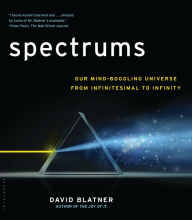Dr. Percy Seymour, author of eight acclaimed books on astronomy and cosmology, received his bachelor's degree in 1964, master's in 1965, and Doctor of Philosophy in 1967, all from Manchester University. His special area of study was magnetic fields in the Milky Way galaxy. From 1972 to 1977, he was senior planetarium lecturer at the Royal Observatory at Greenwich, home of Prime Meridian of the World. From 1977 to 2003, he was principal lecturer in astronomy at the University of Plymouth.
Dark Matters
eBook
-
ISBN-13:
9781601639875
- Publisher: Career Press, Incorporated
- Publication date: 07/15/2008
- Sold by: Barnes & Noble
- Format: eBook
- File size: 2 MB
Available on NOOK devices and apps
Want a NOOK? Explore Now
- Share
- LendMe LendMe™ Learn More
One of the most important unsolved problems of current physics, astronomy, and cosmology is the nature of dark matter and dark energy. These two invisible components of the universe seem to control the behavior of galaxies, clusters of galaxies, and the accelerating expansion of the universe, but we do not know what they are. Dark Matters offers a unified explanation for dark matter and dark energy, and, in doing so, formulates a new theory of ordinary matter.
Central to this new theory is the concept of electric lines of force, encased in something called insulating space, which means we are generally not aware of them, just as we are not aware of the currents passing through insulated cables.
The essential feature of Dark Matters that sets it apart from similar titles is that it sees the whole universe as a tapestry. The background "material" of this tapestry is the space-time framework of Einstein's theories of relativity. The threads of the tapestry are magnetic and electric lines of force. The magnetic lines of force originate from planets and stars; many exist as independent threads that weave their way in the vast spaces that separate the stars of galaxies.
Sure to be discussed and debated in international scientific professional societies, Dark Matters is a fascinating, essential, and accessible book for anyone interested in exploring the frontiers of physics and cosmology.
Customers Who Bought This Item Also Bought
-
- Einstein's Telescope: The…
- by Evalyn Gates
-
- Symmetry and the Beautiful…
- by Leon M. LedermanChristopher T. Hill
-
- Discovering Postmodern…
- by Jerome Drexler
-
- Astrophysics: A Very Short…
- by James Binney
-
- The Theory of Almost…
- by Robert Oerter
-
- Space And Time
- by Emile Borel
-
- Astrophysics in a Nutshell:…
- by Dan Maoz
-
- Horizons of Cosmology
- by Joseph Silk
-
- Einstein's Mistakes: The…
- by Hans C. Ohanian
-
- Planck: Driven by Vision,…
- by Victor Arnaud
-
- Spectrums: Our Mind-boggling…
- by David Blatner
-
- Time Travel and Warp Drives: A…
- by Allen EverettThomas Roman
-
- The World As I See It
- by Neil BergerAlan Harris
-
- Our Cosmic Habitat
- by Martin ReesMartin Rees
















